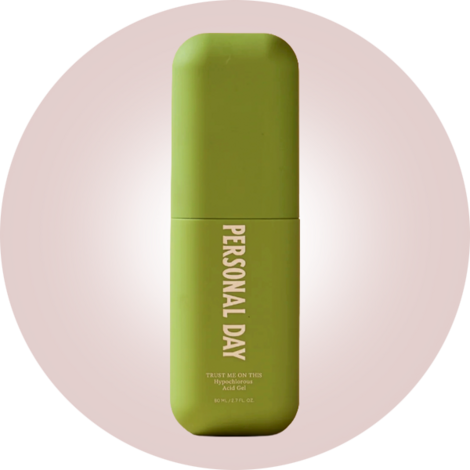Known as the “stress hormone,” cortisol is often singled out for causing everything from food cravings and sleep problems to belly fat and bloating. Yet the hormone, which is produced by the body’s adrenal glands and then released into the bloodstream, is also essential for health.
“In fact, it plays an important role in regulating our metabolism, blood pressure and blood sugar levels among many other things,” says Dr. Nicky Keay, an honorary clinical lecturer in medicine at University College London and author of Hormones, Health and Human Potential (Sequoia). “Too little cortisol has serious health consequences, but some lifestyle habits can cause rises in this hormone that are unwanted and avoidable, too.”
In healthy people, cortisol levels ebb and flow throughout the day in accordance with our body clock, peaking in the morning and gradually dropping to a low in the evening so that we are ready to sleep. Too much stress, a poor diet and inappropriate types of exercise can all lead to cortisol spikes. Over time, studies have shown that chronically high cortisol levels are associated with greater body weight, BMI and waist circumference, even poorer memory and thinking skills. So how can we keep it in balance?
Cut down on caffeine (and wait until midmorning for your first cup)
Drinking excessive amounts of caffeine—more than five or six cups of coffee a day—is known to elevate cortisol secretion, but when you consume it also matters. Several studies, including one in the Pharmacology Biochemistry and Behavior journal, have shown that the effects are amplified if you drink a coffee before high-intensity exercise or when you are already feeling stressed. “The worst thing you can do for cortisol levels is to go to the gym or for a hard run or cycle first thing in the morning fueled by just black coffee and no breakfast,” Keay says. “That puts the body in a stressed state that will almost certainly lead to raised cortisol production.”
Ideally, wait until after morning exercise to have your first coffee, with midmorning the best time to have another cup, before the body has a second natural rise in cortisol levels at around noon.
Remember that cortisol at the right levels is vital for health
As harmful as very high (or very low) levels can be, cortisol is not all bad. For starters, it has the opposite effect to the sleep hormone melatonin, giving us a burst of energy in the morning. But it also influences our response to stress in a positive way, mobilizing our liver and pancreas into increasing glucose production to the brain and muscles so that we are mentally alert and primed to move quickly and focus our attention if we need to.
“We absolutely need some cortisol to stay healthy and ordinarily it will rise quickly in response to stress before going back to baseline levels,” Keay says. “It helps to regulate so many biological functions and affects most cells in the body.” It’s only when we are in a chronic state of stress or when we place repeated multiple physical stressors on the body that cortisol levels are kept high enough to cause potential damage. And since our body can’t tell the difference between the stress of a work deadline and that of a high-intensity interval training (HIIT) session, we need to control both of these kinds of stressors as best we can.
Go for a run, but keep it at a slow pace
A slow morning jog is better than doing a tougher, faster run or adding in bursts of sprinting in the form of interval training for keeping cortisol levels balanced. Jogging at a pace that allows you still to chat gives a sense of how fast you should ideally be running, Keay suggests.
Fredrik Nystrom, a professor of cardiovascular medicine at Linkoping University in Sweden, found that fast running can cause a spike in cortisol even in healthy regular runners. His participants were asked to start one day with a 5k run at maximum intensity before breakfast, and the next day to take an equally long rest at the same time, then measure the contrasting levels of cortisol in their blood.
“We were surprised to find that [hard] running caused the level of cortisol in the blood to rise rapidly and that the level of cortisol in saliva remained high on running days, right up until bedtime,” Nystrom reported. “It wasn’t until the following morning that the cortisol level in saliva was back to normal.”
Keay says that eating breakfast before a hard run would help to counter some of the effects. “But doing a flat-out 5k every day is not advisable,” she says. “Take some days easy and slow to a gentle jog, or even walk, instead.”
Your meals should be regular
Our hormones—cortisol included—rely on regularity of meals to stay balanced, Keay says. In a 2021 study published in the journal Endocrinology and Metabolism, researchers showed that intermittent fasting can alter the levels and secretion of many hormones, including cortisol.
“We have adapted to an overnight fast, but adding in unexpected periods without food leads to an increase in the stress-response hormone cortisol,” she explains, which causes fat to be deposited, especially around the middle.
If, like me, you are someone who isn’t overly stressed (and so are unlikely to have consistently raised cortisol levels) and you practice time-restricted eating—crunching meals into a daily window of a few hours—the cortisol-producing effects are likely to be minimal. However, fasting at more irregular times, as you would with something such as the 5:2 diet, which requires five days of regular eating and two days of restricted calorie intake, might exacerbate “cortisol belly.” If you do fast, don’t overdo it, Keay advises.
Definitely don’t skip breakfast
One of the worst things we can do to increase our cortisol levels is to go without breakfast. “It’s become hugely popular to skip breakfast and to head out for a workout or straight to the office having consumed no food,” Keay says. “This is bad news for the body as being in this prolonged fasted state piles on the stress and increases cortisol production.” Breakfast serves an important function in controlling cortisol levels, Keay says. “We should always try to eat something before heading out of our own front door.”
Go for a 20-minute walk daily,
ideally in nature
Heading outside for 20 minutes, preferably somewhere green, can help to counter high levels of cortisol, according to scientists at the University of Michigan, who studied the effects of what they dubbed a daily “nature pill” on people living in urban areas over eight weeks.
Reporting in Frontiers in Psychology, Mary Carol Hunter, associate professor in ecology at the University of Michigan, allowed participants to choose the time of day, duration and place of their nature walk, the only rules being that it must be in daylight, entail no vigorous exercise, and that people should not be using their phones or reading at the same time. They were asked to walk outdoors for at least ten minutes, three times a week, with tests on cortisol levels being logged. Results showed that walking—or even sitting—in nature for 20 minutes was enough to significantly reduce cortisol levels, and that 30 minutes of nature immersion produced an even greater decline in levels of the stress hormone.
Exercise is good, but recovery time is just as important
Regular exercise plays an important role in overall cortisol control. Research from the University of Westminster shows that people who are active have a lower cortisol response to stress than those who are not. Exercising at a very high intensity can also temporarily elevate cortisol levels. However, a review paper in the Scandinavian Journal of Medicine and Science in Sports found that cortisol rose significantly for up to two hours after a single HIIT session, but had returned to baseline levels 24 hours later.
“High-intensity exercise is a form of stress for the body,” Keay says. “What research tells us is not that we need to avoid hard workouts altogether, but that we really need to factor in recovery to avoid chronically elevated cortisol levels.”
Her preferred approach is to do a higher effort workout every few days, and to do it in the morning. “I make sure I am fully rested and adequately fueled before I go out,” Keay says. “And the key is to then allow recovery throughout the day and not to repeat hard efforts back to back every day, but to substitute with a more gentle type of activity.”
Try “sleep yoga” before bed
“Cortisol levels fluctuate naturally according to your body-clock cycle,” Keay says. “Getting enough sleep on a regular basis is very important for maintaining this rhythm.” Since cortisol’s role is to keep you alert and awake, too much of the stress hormone can disrupt sleep and is linked to waking during the night. “It is important to avoid anything that might raise stress levels in the evening if you struggle with sleep,” Keay says.
That includes hard gym sessions, checking work emails late into the evening and doom-scrolling through news feeds. Regular physical activity such as daily walking was also shown to regulate both cortisol production and sleep quality in a group of women studied by sleep scientists at the universities of Glasgow and Stirling. Practicing yoga nidra (a form of guided meditation) before bed has been shown by the All India Institute of Medical Sciences to reduce cortisol levels in people with chronic insomnia.
Do we need to worry about “cortisol face”?
TikTokkers are blaming the appearance of a rounded, puffy face on high levels of stress hormones, even giving it a name: “cortisol face.” Is it something we should be concerned about? While chronically high levels of cortisol can affect your appearance, it only happens in extremely rare cases.
“There are serious medical conditions that occur when our adrenal glands make too little cortisol, as happens in Addison’s disease, or too much, as in Cushing’s disease,” Keay says. “But they are relatively rare.” A round face, thin arms and legs with a “puffy” body, unexplained weight gain and fat around the base of the neck are symptoms of Cushing’s disease, and anyone experiencing these should seek medical advice. In most cases, a temporarily puffy face can simply be a side effect of bad habits such as drinking too much alcohol, eating high amounts of processed food and being sleep-deprived—all of which cause cortisol levels to spike.
Take up swimming
Neuropsychiatrists at Renmin Hospital of Wuhan University found that going for a gentle swim can have a stress-reducing effect and help to lower cortisol levels. Meanwhile, sports scientists reporting in the International Journal of Environmental Research and Public Health suggested that 60 minutes of gentle swimming a day for five days a week for a month helped to control cortisol levels in unstressed rats, although it didn’t have the same effect when stress levels were already high.
Peta Bee is a U.K.-based freelance health journalist




